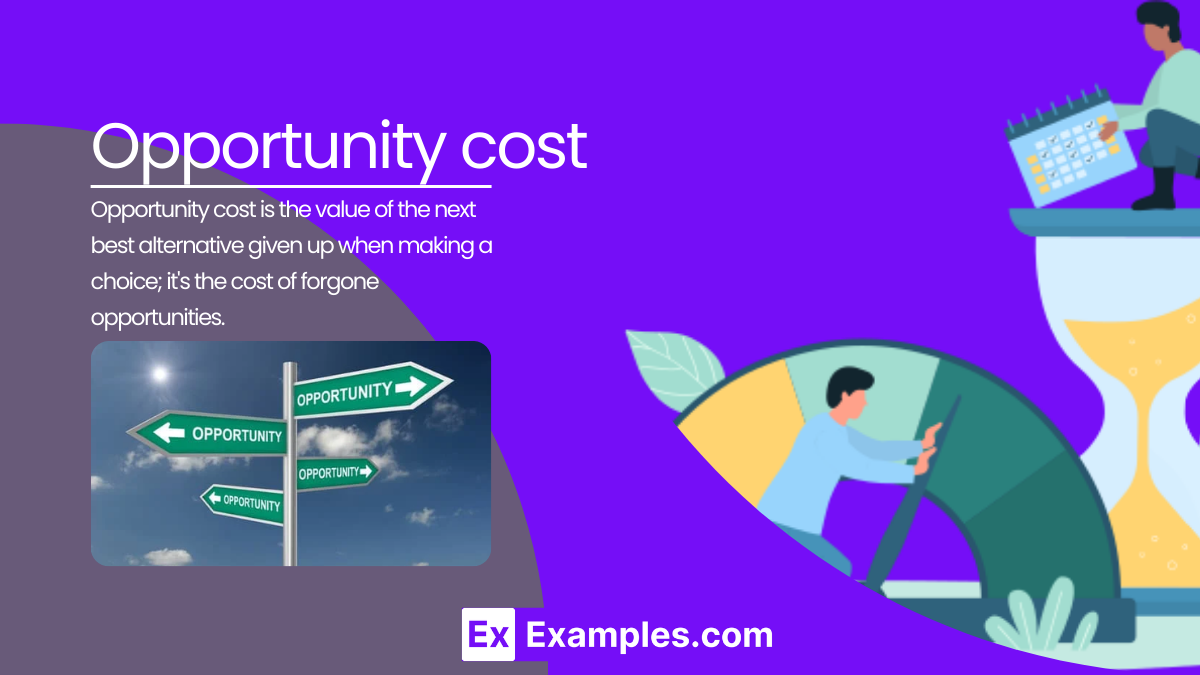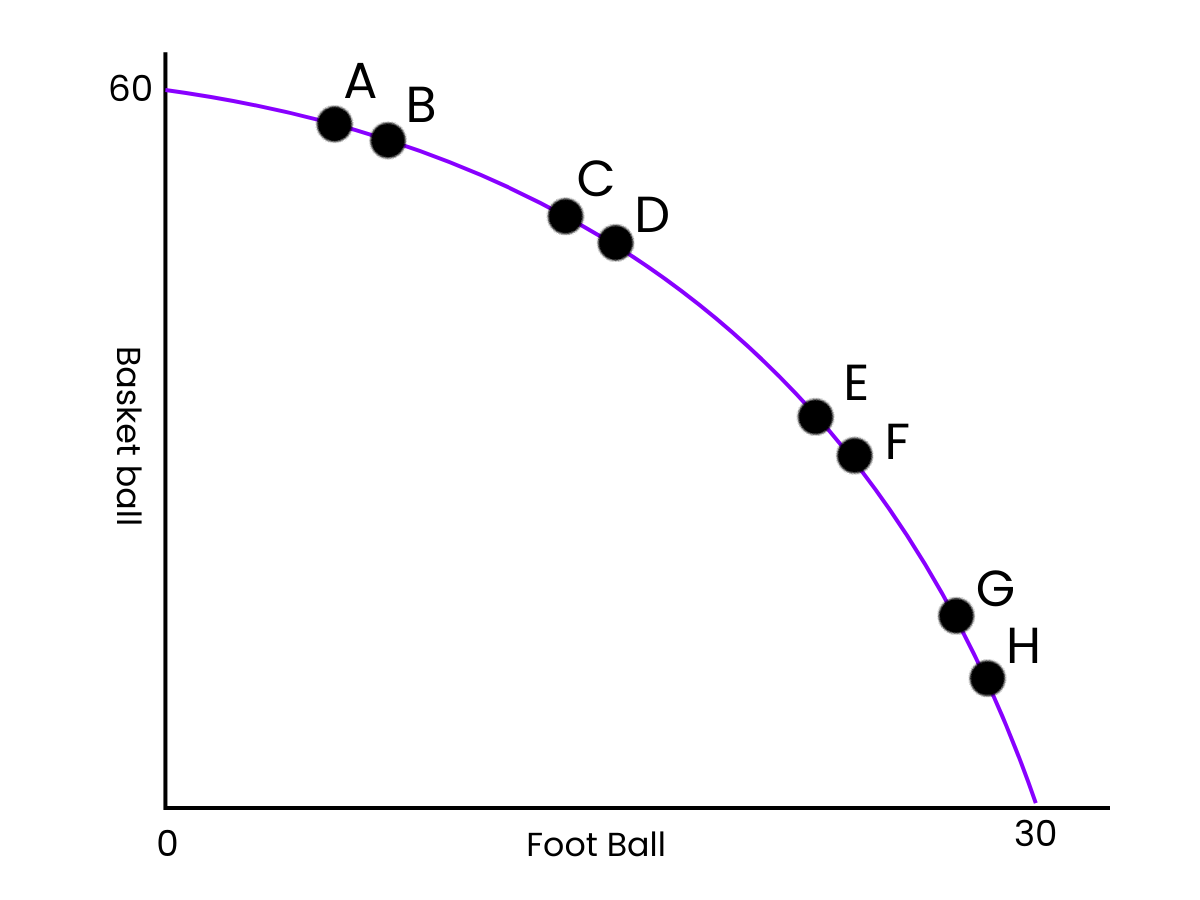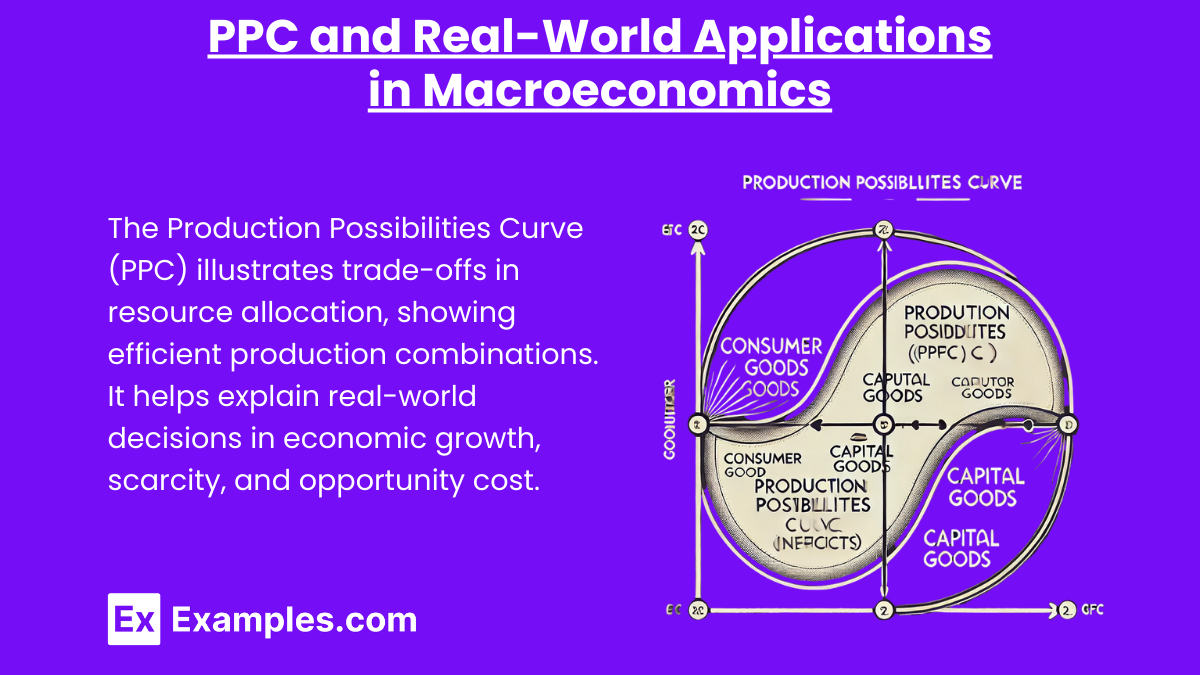Opportunity cost refers to the value of the next best alternative that is foregone when making a decision. In macroeconomics, it plays a crucial role in understanding trade-offs and efficient resource allocation. The Production Possibilities Curve (PPC) illustrates the potential combinations of two goods or services an economy can produce with limited resources. By analyzing the PPC, we can explore opportunity costs, scarcity, and how economies maximize output, which are essential concepts in macroeconomics.
Learning Objectives
By studying opportunity cost and the Production Possibilities Curve (PPC) for the AP Macroeconomics exam, you will learn to identify trade-offs, understand the concept of scarcity, and analyze efficient resource allocation. You’ll also gain the ability to interpret the PPC graph, calculate opportunity costs, and explain how economies optimize production choices under constraints, a key concept in macroeconomics.
1. Opportunity Cost:

Opportunity cost is the value of the next best alternative that is sacrificed when a choice is made. In macroeconomics, it explains trade-offs and resource allocation. For example, if a country chooses to produce more cars, the opportunity cost is the number of other goods, like computers, that could have been produced. Understanding opportunity cost helps in evaluating decisions and comparing alternatives.
2. The Production Possibilities Curve (PPC)

The Production Possibilities Curve (PPC) illustrates the trade-offs between two goods that an economy can produce with limited resources. Points on the curve represent efficient resource use, while points inside indicate inefficiency. The slope of the curve represents opportunity cost, showing how producing more of one good leads to less production of the other. Shifts in the PPC occur due to changes in resources or technology, representing economic growth or decline.
3. Law of Increasing Opportunity

The law of increasing opportunity costs states that as an economy continues to produce more of one good, the opportunity cost of producing additional units rises. This happens because resources are not equally suited for all types of production. The PPC can also shift outward due to economic growth, technological advancements, or better use of resources, or inward due to a loss of resources, indicating reduced production capacity.
4. PPC and Real-World Applications in Macroeconomics

The PPC demonstrates key macroeconomic concepts like trade-offs, efficiency, and policy impacts. It helps explain decisions like how much of an economy’s resources should be allocated to consumer goods versus military goods. In the real world, the PPC helps understand how economies optimize production and how government policies can influence resource allocation and economic growth. Mastering the PPC is crucial for success on the AP Macroeconomics exam.
Examples
Example 1. Guns vs. Butter
A country must choose between producing more military goods (guns) or consumer goods (butter). Increasing guns means sacrificing butter production.
Example 2. Healthcare vs. Education
A government allocates funds to healthcare, which limits the resources available for education, illustrating the trade-off between these two services.
Example 3. Food vs. Technology
A nation invests heavily in agricultural production, but this reduces resources available for technology development, showcasing opportunity costs.
Example 4. Work vs. Leisure
An individual chooses to work overtime instead of taking a vacation. The opportunity cost is the relaxation time sacrificed for more income.
Example 5. Environmental Conservation vs. Industrial Development
A country can allocate resources to preserve forests or use them for industrial growth, leading to trade-offs between environmental protection and economic expansion.
MCQ
Question 1
What does a point inside the Production Possibilities Curve (PPC) represent?
A) Efficient use of resources
B) Inefficient use of resources
C) Unattainable production levels
D) Maximum production capacity
Answer: B) Inefficient use of resources
Explanation: Points inside the PPC indicate that resources are not being used efficiently, meaning the economy is underperforming.
Question 2
What is the opportunity cost of moving from one point to another on the PPC?
A) The increase in both goods
B) The loss of the next best alternative
C) No loss in production
D) The shift of the entire curve
Answer: B) The loss of the next best alternative
Explanation: Opportunity cost is the value of the foregone alternative when shifting production between two goods on the PPC.
Question 3
What causes the PPC to shift outward?
A) A decrease in available resources
B) Technological advancements
C) Inefficient resource allocation
D) Increase in unemployment
Answer: B) Technological advancements
Explanation: Technological advancements lead to increased efficiency and higher production capacity, causing the PPC to shift outward.


